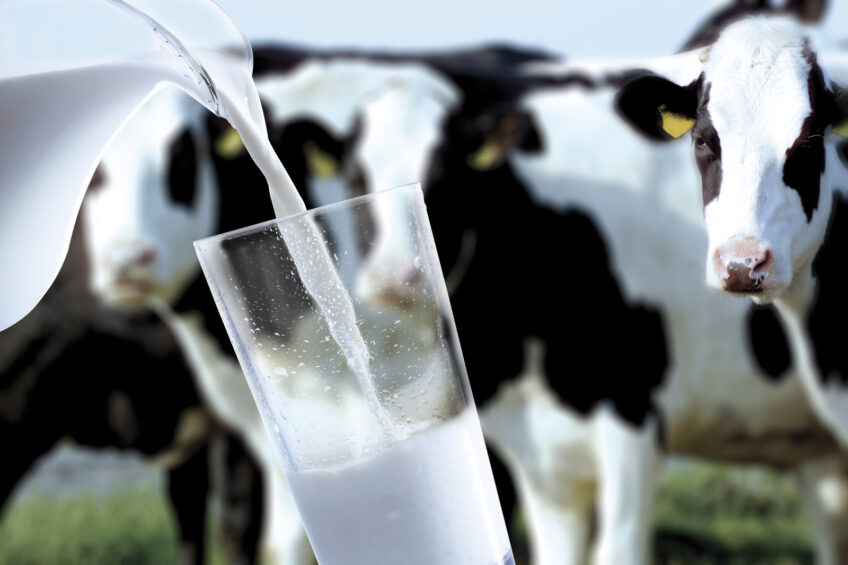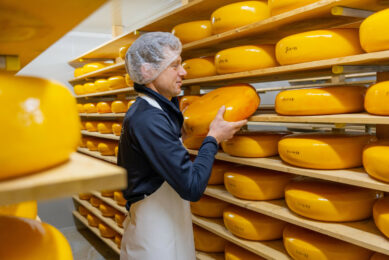Milk price comparison: 2014 was a good year

In 2014, high milk prices led to high milk production among European dairy farmers. This made 2014 a record year in terms of money paid per 100 kg of standard milk. 2015 looks less promising.
This is the conclusion of the ‘LTO International Milk Price Comparison’, a comparison study done by ZuivelNL, European Dairy Farmers and LTO Nederland.
The calculated milk prices for 2014 of 16 EU dairy companies have increased by 1.7% on average to € 38.62 per 100 kg of standard milk. This means that the 2013 record level has been exceeded by €0.66.
Explanation of Finnish ranking
The record milk price in calendar year 2014 is due to the high milk prices obtained in the first half of the year. After the summer, the prices began to fall sharply. For the third consecutive year, the top three rankings for dairy companies in the EU remained unchanged. The ranking is led by Hämeenlinnan Osuusmeijeri from Finland, followed by Granarolo (Italy) and FrieslandCampina in the Netherlands. However, the rise in milk prices paid by the relatively small cooperative Hämeenlinnan O. is not representative of Finland. The vast majority (85%) of Finnish milk is processed by Valio. The milk prices paid by Valio to its members fell by 5% in 2014 (www.valio.com), mainly influenced by the Russian boycott. For FrieslandCampina, 2014 was a difficult year, but aided by good sales of infant foods in China. The relatively large increase in the calculated milk price to €39.45 (+8%) paid by Dairy Crest in the UK is largely affected by the increase in exchange rate of the British pound to the Euro.
French milk prices are trailing
The position of the milk prices paid by the French dairy companies in the ranking (6th to 9th place) shows again that French milk prices are trailing. Both the surge of European milk prices in the second half of 2013 and the sharp fall after the summer of 2014 appear to be reflected slowly in the French milk prices. The result is that the French calculated milk prices increased relatively less than average in calendar year 2013 and relatively more than average in 2014. In 2013, milk prices of French companies were between 12th and 15th ranking.
Milk price comparison with non EU countries
The report also compared the EU prices with non EU countries. The milk price paid by Emmi (Switzerland) is €51.07, the highest milk price calculated in 2014 and the highest price paid for milk outside the EU. Prices in New Zealand fell, mainly due to the worsening global dairy market. New Zealand is strongly dependent on the world market. The increase in milk prices in the United States is in stark contrast to the sharp fall in New Zealand. They have risen almost 25%. This increase comes on top of the US milk prices, which were already relatively high in recent years. Last year, American dairy farmers have benefitted from a sharp rise in internal demand for dairy products.

A market view of the US dairy industry
The US dairy market has seen production levels rising slightly. Cheese and butter prices are up, partly due to higher domestic demands. What are other trends seen in the US dairy market? Mike McCully shares his view on these issues in his market review below.
Milk prices down in 2015
Between late February and May 2015, the price levels of various products fell sharply. This was particularly the case for skimmed milk powder for human consumption (-22%) and whey powder (-23%). The developments in the dairy market had the effect that milk prices, that were already low in early 2015, decreased further. In itself, this is not unusual, as mostly milk prices fall in the spring to rise again in May. But in 2015, average milk prices are expected to fall slightly more in May and June.
Note: The method chosen for the calculations shows the price a dairy farmer would receive if milk of specific (standard) composition, quality and quantity were delivered to the different dairy companies. (4,2% fat; 3,4% protein; total bacteria count of 24.999 per ml; SCC of 249.999 per ml and annual delivery of 500.000 kg). There is no comparison of the average milk prices paid. This is dependent on the real composition and milk delivered. See full report
Join 13,000+ subscribers
Subscribe to our newsletter to stay updated about all the need-to-know content in the dairy sector, two times a week.










